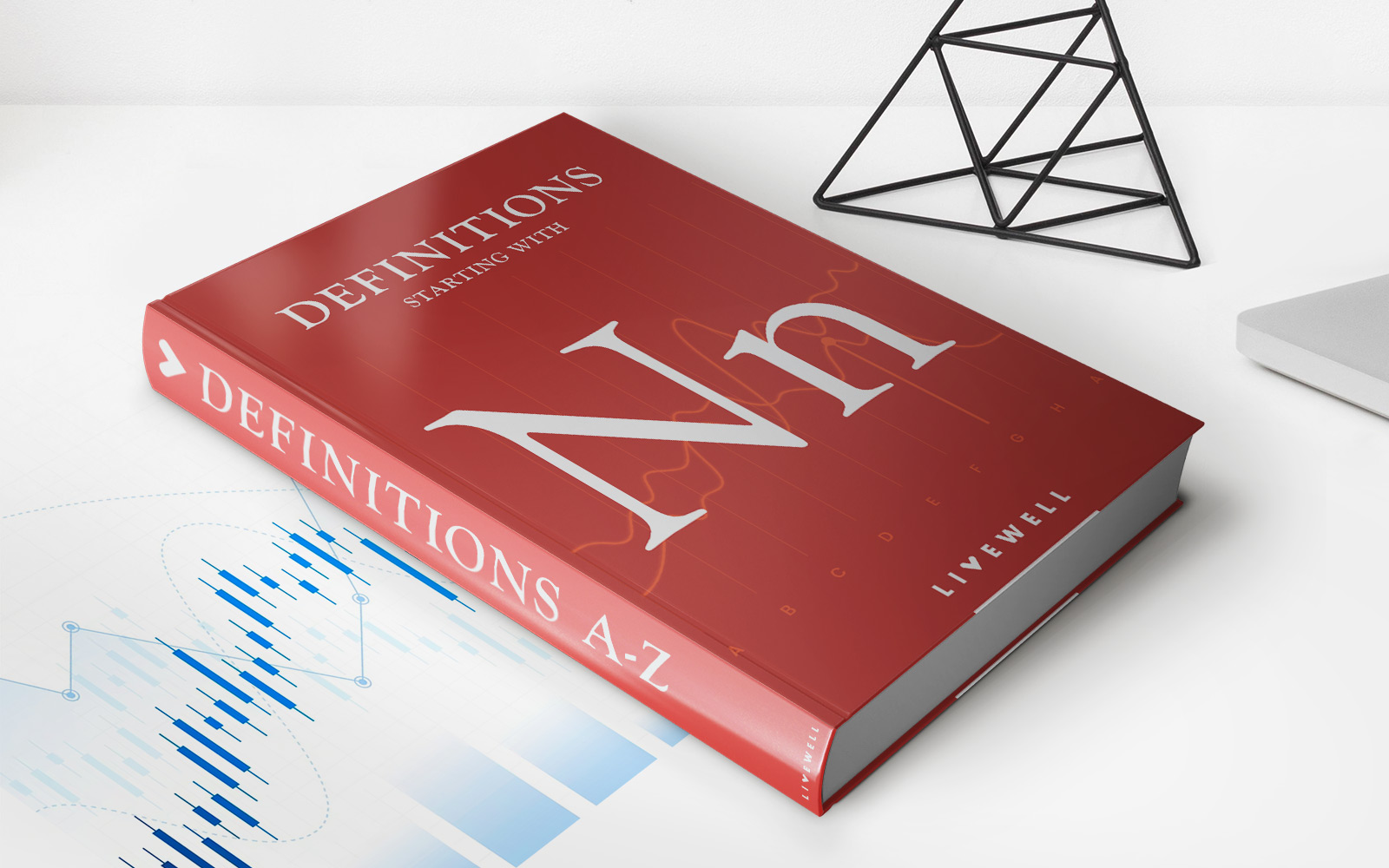Home>Finance>What Is The Difference Between A Simple IRA And A 401K


Finance
What Is The Difference Between A Simple IRA And A 401K
Published: October 18, 2023
Discover the difference between a Simple IRA and a 401K, and make informed financial decisions. Explore retirement saving options in this comprehensive guide.
(Many of the links in this article redirect to a specific reviewed product. Your purchase of these products through affiliate links helps to generate commission for LiveWell, at no extra cost. Learn more)
Table of Contents
Overview
When it comes to retirement saving plans, two popular options that often come to mind are the Simple IRA and the 401(k). Both of these plans offer individuals the opportunity to save for their retirement, but they have some key differences that are important to consider when deciding which plan is best for you.
A Simple IRA, or Savings Incentive Match Plan for Employees, is a retirement savings plan that is typically used by small businesses or self-employed individuals. It is designed to be easy to set up and maintain, making it an attractive option for those who want a simple way to save for their retirement.
On the other hand, a 401(k) is a retirement savings plan offered by employers to their employees. It allows employees to contribute a portion of their pre-tax income to their retirement savings, and sometimes employers may also contribute to the plan on behalf of their employees. 401(k) plans are more common among larger companies and offer a wider range of investment options compared to a Simple IRA.
Both the Simple IRA and 401(k) offer tax advantages, including potential tax deductions on contributions and tax-deferred growth, meaning earnings on investments are not taxed until they are withdrawn. However, the contribution limits, employer match options, and rules surrounding withdrawals and distributions differ between the two plans.
In the following sections, we will delve deeper into the specific features of each plan, allowing you to better understand the differences and choose the retirement savings plan that aligns with your financial goals and circumstances.
Contributions
One of the key factors to consider when comparing a Simple IRA and a 401(k) is the contribution limits and options available for each plan.
In a Simple IRA, both employees and employers can contribute to the plan. As an employee, you can contribute a portion of your salary on a pre-tax basis, up to a maximum of $13,500 (in 2021). If you are 50 years or older, you are also eligible for catch-up contributions, allowing you to contribute an additional $3,000. On the employer side, they have two options for contributing: they can either match the employee’s contributions dollar-for-dollar up to 3% of the employee’s compensation or make non-elective contributions of 2% of the employee’s compensation.
On the other hand, a 401(k) plan allows employees to contribute a higher amount to their retirement savings. In 2021, the employee contribution limit for a 401(k) is $19,500, with an additional catch-up contribution of $6,500 for individuals who are 50 years or older. Employers also have the option to make contributions on behalf of their employees, either through matching or non-elective contributions. The employer match in a 401(k) plan can vary, and it is important to review the specific terms of your employer’s plan to understand the contribution matching options they provide.
It is also worth noting that contributions to both a Simple IRA and a 401(k) are tax deductible, meaning you can deduct the amount you contribute from your taxable income for the year. This can provide a significant tax advantage and help reduce your overall tax liability.
Overall, both the Simple IRA and the 401(k) offer attractive contribution options, but the key difference lies in the maximum contribution limits. If you are looking to contribute a higher amount to your retirement savings, a 401(k) may be the better choice. However, if you are a small business owner or self-employed individual, a Simple IRA can still provide a viable and tax-efficient option for saving for retirement.
Employer Match
Employer matching is an important consideration when comparing a Simple IRA and a 401(k) plan. It refers to the contributions made by employers on behalf of their employees, which can significantly boost retirement savings.
In a Simple IRA, employers have two options for contributing to the plan. They can choose to match employee contributions dollar-for-dollar, up to 3% of the employee’s compensation, or they can opt for non-elective contributions of 2% of the employee’s compensation, regardless of whether the employee contributes or not. The employer’s contributions in a Simple IRA are immediately vested, meaning the employee has immediate ownership of the contributed funds.
On the other hand, 401(k) plans offer more flexibility in terms of employer contributions. Employers can choose to match a certain percentage of employee contributions according to a predetermined formula. For example, an employer might offer a 50% match on employee contributions up to 6% of their compensation. This means that if an employee contributes 6% of their salary, the employer will contribute an additional 3%. The specific terms of the match can vary, so it is important to review your employer’s 401(k) plan document to understand the matching options available to you. It is also worth noting that employer contributions in a 401(k) plan may be subject to a vesting schedule.
Vesting refers to the process by which an employee gains ownership over employer contributions to their retirement plan. In a 401(k), employers can impose vesting schedules, which means that employees may not have full ownership of employer contributions until they have completed a certain number of years of service. In a Simple IRA, as previously mentioned, employer contributions are immediately vested, providing employees with full ownership from the start.
Overall, the employer match in both a Simple IRA and a 401(k) can significantly contribute to your retirement savings. The key difference lies in the flexibility of employer contributions and the potential vesting schedule in a 401(k) plan. If your employer offers a generous matching program, a 401(k) may provide a greater advantage in terms of growing your retirement nest egg. However, if vesting and immediate ownership of employer contributions are important to you, a Simple IRA may be a more attractive option.
Vesting
Vesting is an important factor to consider when comparing a Simple IRA and a 401(k) plan. It determines the ownership rights over employer contributions to the retirement plan.
In a Simple IRA, employer contributions are immediately vested. This means that as an employee, you have immediate ownership and control over the funds contributed by your employer. Regardless of how long you have been with the company, you have the right to the full amount of employer contributions made to your Simple IRA.
On the other hand, 401(k) plans often have vesting schedules imposed by employers. Vesting schedules determine the amount of time an employee must work for an employer before they have full ownership of employer contributions. These schedules can vary, but they typically include a graded or cliff vesting structure.
Graded vesting gradually awards ownership rights to employer contributions over a specific period. For example, a common graded vesting schedule might feature a 20% vesting after two years of service, with an additional 20% vesting each subsequent year, until full ownership is reached after six years.
In contrast, cliff vesting grants full ownership of employer contributions to employees after a certain period of time. For instance, an employer may have a cliff vesting schedule where employees become fully vested after three years of service. This means that if an employee leaves the company before the cliff vesting period is reached, they will not be entitled to employer contributions.
It is important to understand the vesting schedule of a 401(k) plan, as it will impact the amount of retirement savings you can take with you if you change jobs. If you leave a company before becoming fully vested, you may forfeit a portion or all of the employer contributions that have not yet vested.
In summary, while a Simple IRA offers immediate vesting of employer contributions, a 401(k) plan may have vesting schedules that determine the ownership rights over employer contributions. Understanding the vesting schedule of a 401(k) plan is crucial when assessing the potential impact on your retirement savings if you change jobs before becoming fully vested.
Limits
Both Simple IRAs and 401(k) plans have limits on the amount of contributions that can be made each year. These limits are set by the Internal Revenue Service (IRS) and are subject to periodic adjustments.
For a Simple IRA, the contribution limit for employees is $13,500 in 2021. If you are 50 years or older, you are eligible for catch-up contributions, allowing you to contribute an additional $3,000. It is important to note that employer contributions do not count towards the employee’s limit.
On the other hand, 401(k) plans have higher contribution limits. In 2021, the employee contribution limit for a 401(k) is $19,500. Individuals aged 50 or older are eligible for catch-up contributions of up to $6,500. It is worth mentioning that employer contributions, including matching contributions, are separate from the employee contribution limits and can further increase the total contribution to the plan.
In addition to the limits on contributions, there are also annual limits on the total amount of money that can be contributed to a retirement plan. For a Simple IRA, the limit is $58,000 in 2021.
For 401(k) plans, the annual limit is higher, set at $58,000 for 2021. This limit includes both employee and employer contributions, as well as catch-up contributions for those aged 50 or older.
It is important to keep these limits in mind to ensure that you are maximizing your savings while remaining compliant with the IRS regulations. Exceeding the contribution limits may result in penalties and tax implications.
Overall, while both Simple IRAs and 401(k) plans have contribution limits, 401(k) plans generally offer higher limits, providing the opportunity for individuals to save more for their retirement. However, it is essential to review the specific limits and regulations set by the IRS each year, as they can change over time.
Withdrawals
Understanding the rules and regulations regarding withdrawals is crucial when considering a Simple IRA or a 401(k) plan. Both plans have specific guidelines that govern when and how withdrawals can be made.
In a Simple IRA, withdrawals can typically be made penalty-free starting at age 59 ½. However, if you withdraw funds before reaching this age, you may be subject to a 10% early withdrawal penalty in addition to ordinary income taxes. There are some exceptions to this penalty, such as using the funds for certain qualified education expenses or medical expenses.
On the other hand, 401(k) plans also allow penalty-free withdrawals starting at age 59 ½. However, there is an additional provision known as the “rule of 55” in a 401(k) plan. This rule states that if you leave your job in or after the year you turn 55 (or 50 for public safety employees), you can take withdrawals from your 401(k) plan without incurring the 10% early withdrawal penalty. Income taxes still apply to these withdrawals.
Both Simple IRAs and 401(k) plans also have required minimum distribution (RMD) rules. RMDs are the minimum amount that must be withdrawn from the retirement account each year once you reach the age of 72 (or 70 ½ if you attained that age before 2020) in order to avoid penalties. Failure to take the required distribution may result in a 50% tax penalty on the amount that should have been withdrawn.
It is worth noting that while RMDs are required for traditional 401(k) plans, Roth 401(k) plans do not have RMD requirements as long as you are the original account owner.
In summary, both Simple IRAs and 401(k) plans have specific rules governing withdrawals. It is important to understand these rules to avoid penalties and maximize the benefits of your retirement savings. Additionally, consider the impact of taxes when making withdrawals, as the funds will generally be subject to ordinary income taxes.
Required Minimum Distributions (RMDs)
Required Minimum Distributions (RMDs) are an important aspect of retirement plans, including Simple IRAs and 401(k) plans. RMDs are the minimum amount that must be withdrawn from the account each year once you reach a certain age. RMD rules aim to ensure that individuals do not use these retirement accounts solely for tax-deferred growth and ultimately encourage the distribution of funds during retirement.
For both Simple IRAs and 401(k) plans, RMDs are generally required to begin by April 1st following the year in which you turn 72 years old (or 70 ½ if you attained that age before 2020). This is known as the required beginning date (RBD).
The exact amount for RMDs is calculated based on your age, account balance, and life expectancy using the IRS Uniform Lifetime Table or, if applicable, the Joint Life and Last Survivor Expectancy Table. The purpose of these calculations is to ensure that the account is gradually depleted throughout your lifetime.
It is essential to note that failure to take the required minimum distribution may result in a 50% tax penalty on any amount that should have been withdrawn. Therefore, it is crucial to stay informed and take RMDs in a timely manner to avoid any penalties.
However, it is worth noting that Roth 401(k) accounts are not subject to RMDs during the lifetime of the original account owner. This provides greater flexibility for individuals who want to maintain the funds in the account and potentially pass them on to heirs.
In summary, RMDs are an important component of retirement plans and apply to both Simple IRAs and 401(k) plans. It is essential to understand the age at which RMDs are required to begin and calculate the minimum withdrawal amount accurately to avoid penalties. Consulting with a financial advisor can help ensure compliance with RMD rules and optimize your retirement savings strategy.
Accessibility
Accessibility refers to how easily funds can be accessed from a retirement savings plan, such as a Simple IRA or a 401(k). Understanding the accessibility options is important when considering your individual financial needs and goals.
In a Simple IRA, funds are generally accessible once you reach the age of 59 ½, without incurring any penalties. However, if you need to access the funds before reaching this age, you may be subject to a 10% early withdrawal penalty in addition to ordinary income taxes. There are some exceptions to this penalty, such as using the funds for certain qualified education expenses or medical expenses.
A 401(k) plan also allows for accessibility, with penalty-free withdrawals typically starting at age 59 ½. In addition to this, the “rule of 55” applies to 401(k) plans, allowing employees who separate from their job at age 55 or older (or 50 for public safety employees) to take withdrawals without incurring the 10% early withdrawal penalty. However, income taxes are still applicable to these withdrawals.
It is important to note that accessibility to retirement funds should be approached with caution. These funds are intended for retirement purposes, and early withdrawal can significantly impact your long-term financial security. Withdrawing funds early reduces the overall balance of your retirement savings and may limit the potential for growth over time.
To maintain accessibility and ensure the growth of your retirement savings, it is generally recommended to explore other financial options for short-term needs, such as building an emergency fund or considering other sources of income.
Another important aspect to consider is the loan provision available in some 401(k) plans. Depending on the specific plan, employees may have the option to borrow against their 401(k) savings. These loans typically need to be repaid within a specified timeframe, and failure to do so may result in taxes and penalties.
In summary, while both Simple IRAs and 401(k) plans provide accessibility to funds, it is essential to carefully consider the financial implications before making any withdrawals from your retirement savings. Early withdrawals can have a significant impact on your long-term goals and should be approached with caution, understanding the potential tax consequences and long-term implications for your retirement plan.
Portability
Portability refers to the ability to transfer or roll over retirement funds between different accounts or employers. It is an important consideration when comparing a Simple IRA and a 401(k) plan, as it affects your flexibility and control over your retirement savings.
A Simple IRA offers portability, allowing you to easily transfer funds to another qualified retirement plan or individual retirement account (IRA). This means that if you change jobs or your employer no longer offers a Simple IRA, you can roll over your funds into a new retirement account without incurring any tax consequences. This flexibility allows you to maintain the tax advantages of your retirement savings and continue to grow your funds.
On the other hand, the portability of a 401(k) plan depends on the rules and policies set by your specific employer. In some cases, employers may allow you to roll over your 401(k) funds to a new employer’s retirement plan, while others may require you to roll over the funds to an individual retirement account (IRA) instead. It is crucial to review your employer’s plan document or consult with a financial advisor to understand the portability options available to you.
In addition to changing employers, you may also consider consolidating your retirement funds to streamline your savings and have a better overview of your investments. Both Simple IRAs and 401(k) plans offer the option to consolidate funds from multiple retirement accounts into one account. This helps to simplify your retirement savings strategy and potentially minimize management fees.
Overall, while both Simple IRAs and 401(k) plans offer some level of portability, Simple IRAs tend to provide more flexibility in transferring funds to other retirement accounts or consolidating funds from various sources. However, it is important to carefully review the rules and regulations of each plan and consider the potential tax consequences before making any transfers or rollovers.
Tax Implications
Tax implications play a crucial role in retirement savings plans like the Simple IRA and the 401(k). It is essential to understand the tax advantages and considerations associated with each plan in order to make informed decisions.
Both the Simple IRA and the 401(k) offer tax advantages that can help individuals maximize their retirement savings. Contributions to both plans are typically made on a pre-tax basis, meaning they reduce your taxable income for the year in which the contributions are made. This immediate tax deduction can provide valuable savings and potentially lower your overall tax liability.
However, it is important to note that taxes are eventually paid on the funds withdrawn from the retirement accounts. Both the Simple IRA and the 401(k) operate under a tax-deferred structure, which means that the earnings on investments grow tax-free until withdrawals are made. Once you start withdrawing from the accounts, the funds are subject to ordinary income tax. It is worth mentioning that if you withdraw funds before reaching the required age, you may also incur additional penalties.
It is essential to consider your anticipated tax bracket in retirement when deciding between a Simple IRA and a 401(k). Depending on your financial situation and goals, one plan may offer more favorable tax advantages than the other. Additionally, factors like your anticipated income in retirement, other sources of income, and potential changes in tax laws should be considered when assessing the tax implications of each plan.
Another factor to consider is the option of a Roth 401(k). While the contributions to a Roth 401(k) are made on an after-tax basis, the withdrawals in retirement are generally tax-free. This can be advantageous for individuals who anticipate being in a higher tax bracket in retirement or want to have tax-free income in later years.
It is important to consult with a tax professional or financial advisor who can provide guidance specific to your situation and help you navigate the tax implications of each retirement savings plan.
In summary, both the Simple IRA and the 401(k) offer valuable tax advantages, but it is important to consider your current and future tax situation when choosing between the plans. Understanding tax deductions, tax-deferred growth, and potential penalties will help you make informed decisions that align with your long-term financial goals.
Eligibility
Eligibility requirements are an important factor to consider when deciding between a Simple IRA and a 401(k) plan. Understanding who qualifies for each plan will help you determine which option is available to you based on your employment status and other criteria.
A Simple IRA is typically used by small businesses or self-employed individuals. For employees to be eligible for a Simple IRA, they must have earned at least $5,000 in compensation from the employer during any two preceding years and be expected to earn at least $5,000 in the current year. This makes Simple IRAs an accessible option for a wide range of employees and self-employed individuals.
Contrarily, a 401(k) plan is typically offered by larger employers to their employees. Each employer sets specific eligibility requirements for their 401(k) plan, which may include factors such as length of service, minimum hours worked, or job classification. Some employers may even offer immediate eligibility for all employees, while others may require a waiting period before employees can start contributing to the plan. It is essential to review your employer’s plan document or consult with the human resources department to determine your eligibility for a 401(k) plan.
In addition to employer-specific eligibility requirements, both the Simple IRA and the 401(k) have eligibility criteria defined by the Internal Revenue Service (IRS). For example, individuals must meet IRS requirements to be eligible for tax-deductible contributions or catch-up contributions in both plans.
It is also important to note that individuals cannot contribute to a Simple IRA and a 401(k) plan simultaneously. If eligible for both plans, you will need to choose one or the other, or contribute to both but within the respective contribution limits for each plan.
It is crucial to review your eligibility for each plan and consider factors such as employment status, income level, and employer-sponsored benefits when determining which plan aligns best with your retirement goals and circumstances.
In summary, eligibility for a Simple IRA or a 401(k) is dependent on various factors, including employment status, income level, and employer-specific requirements. Understanding the eligibility criteria for each plan will help you determine the available options and make informed decisions regarding your retirement savings.
Choosing Between a Simple IRA and a 401(k)
Choosing between a Simple IRA and a 401(k) requires careful consideration of several factors, including your employment status, contribution limits, employer match options, vesting schedules, accessibility, and tax implications. Evaluating these factors will help you make an informed decision that aligns with your individual financial goals and circumstances.
If you are a small business owner or self-employed individual, a Simple IRA can be an attractive option. The setup and maintenance are relatively easy, and it allows for both employee and employer contributions. However, the contribution limits for a Simple IRA are lower compared to a 401(k), which may limit the amount you can save for retirement.
For employees working for a larger employer, a 401(k) offers higher contribution limits, potentially allowing you to save more for retirement. Additionally, the employer match option in a 401(k) can provide a significant boost to your savings. However, 401(k) plans may have more complex rules, including vesting schedules and limited investment options. It is also important to consider your portability options if you anticipate changing jobs in the future.
You should also consider the tax implications of each plan. Both the Simple IRA and the 401(k) offer tax advantages, including tax deductions on contributions and tax-deferred growth. However, the timing of when you pay taxes on the funds differs. In a Simple IRA and a traditional 401(k), funds are taxed when withdrawn in retirement, whereas a Roth 401(k) offers tax-free withdrawals if you meet specific requirements. Consider your current and future tax situation to determine which plan will provide the most tax advantages for your needs.
Ultimately, the decision between a Simple IRA and a 401(k) depends on your specific circumstances and preferences. If you are a small business owner or self-employed individual, a Simple IRA may be a simple and cost-effective option. On the other hand, if you have access to a 401(k) through your employer and they offer a generous match, taking advantage of the higher contribution limits and potential employer match can provide a significant advantage.
It is crucial to review the specific details, rules, and benefits of each plan, as well as consult with a financial advisor, to make an informed decision that aligns with your retirement goals. Remember, investing in your retirement savings is an important step towards securing your financial future, so take the time to carefully evaluate your options and choose the plan that best suits your needs and objectives.
Conclusion
Choosing between a Simple IRA and a 401(k) requires thoughtful consideration of various factors. Both plans offer valuable options for saving for retirement, but they have distinct differences that can significantly impact your financial journey.
A Simple IRA is a suitable choice for small business owners, self-employed individuals, and employees of companies that offer this plan. It provides simplicity in setup and maintenance, along with the flexibility for both employee and employer contributions. However, the contribution limits are lower compared to a 401(k), which may limit the amount you can save for retirement.
On the other hand, a 401(k) plan is commonly offered by larger employers and provides higher contribution limits. It often comes with the potential for employer matching contributions, which can boost your retirement savings significantly. However, the plan may have more complex rules, including vesting schedules and fewer investment options.
When considering which plan to choose, it is important to assess your individual circumstances. Factors such as your employment status, income level, anticipated tax bracket in retirement, and portability options should all be taken into account. Additionally, understanding the tax implications and the long-term impact of the chosen plan on your financial goals is crucial.
Ultimately, the decision between a Simple IRA and a 401(k) should align with your retirement goals and financial objectives. It is advisable to consult with a financial advisor or tax professional who can provide personalized guidance based on your specific situation.
Remember, whichever plan you choose, the most important step is to start saving for retirement as early as possible. By consistently contributing to your chosen plan and taking advantage of any available employer match, you can maximize your savings and work towards a comfortable retirement.
In conclusion, carefully evaluate the features, benefits, and limitations of both options before making a decision. Give thoughtful consideration to your personal circumstances and long-term financial goals. Regardless of which plan you choose, the key is to prioritize saving for retirement and take proactive steps towards securing your financial future.














